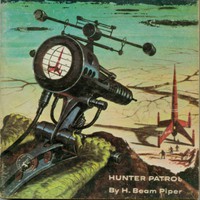U-4714, Robert F. Clifton [ebook reader for surface pro TXT] 📗

- Author: Robert F. Clifton
Book online «U-4714, Robert F. Clifton [ebook reader for surface pro TXT] 📗». Author Robert F. Clifton
U-4714
by
Robert F. Clifton
U-4714
Copyright 2014 by Robert F. Clifton
All rights reserved. No part of this book may
be reproduced or transmitted in any form or
by any means without written permission from
the author.
Dedicated to My Daughter
Suzanne
The reader is advised that this is a work of fiction. Any similarity to any person, place or events is purely coincidental.
R. F. Clifton
Introduction
In every war each side considers the other to be the belligerent.
In every war each side has it hero's. When Congressional Medals Of Honor and Victoria Crosses were given, at the same time Iron Crosses and The Knights Cross were bestowed, some with diamonds.
World War Two written history contains the names of the gallant names of Allied soldiers, fliers, sailors and marines. Fortunately, it also contains the names of the courageous U-Boat Commanders who fought in the Battle Of The Atlantic, some never to return again.
This is a fictional story of one such U-Boat Commander, his early life,
his love for his country, his wife and family and his battles at sea.
Robert F. Clifton
Table Of Contents
Chapter One.....First Patrol
Chapter Two.... Second Patrol and The Iron Cross
Chapter Three..The Red Castle
Chapter Four.... Back to Sea
Chapter Five.....The Milk Cow
Chapter Six........1943
Chapt.Seven. ....Salvage
Chapter Eight....The Gulf of Mexico
Chapter Nine....Mexico & Cuba
Chapter Ten......Bordeaux
Chapter eleven..Newfoundland
Chapter Twelve..flenburg
Afterword
Chapter One
First Patrol
Kapitanleutnant Reinhardt Dresner entered the large, concrete submarine pens of the Keroman Submarine Base in Lorient, France. When he did he left the bright mid-morning sunlight and its summer warmth.
Instantly upon entering he felt the temperature drop as the cold, thick, concrete walls and roof maintained a constant cool atmosphere.
As he walked along the weapons platform he noticed the new, acoustic torpedoes and UMA mines stacked and stored ready for loading in U-boats going out to sea.
The odor of diesel oil hung in the air and a rainbow colored oil slick floated on top of the water in one empty pen. He walked past an older, C forty one type boat, built now with a larger bridge and increased armament of two twenty millimeter deck guns. It and U-4714 were the only submarines in the pens. He thought back to the “Happy Times” when the U-boats were sinking the tankers and freighters attempting to cross the Atlantic. Then, the pens were full as returning boats docked as bands played and young girls presented bouquets to the Captains and other boats departed. As he stood on the dock he took a long look at the U-4714. It was built in the shipyard of Hamburg. The last of the new and latest design. The boat was two hundred and twenty five feet long and propelled by two, supercharged, six cylinder diesel engines for surface running and electric motors for operating when submerged. Armed and fueled the boat could travel over fifteen hundred nautical miles.
A black, rubber coating called Alberic covered the boat, a latest, unproven method that supposedly eliminated signals of allied ASDIC allowing the boat to remain submerged and undetected. In addition to the snorkel a, device that allowed fresh air to reach the boat's batteries to be charged when the boat was under water, the U-4714 was equipped with the “Hohentwiel” radar and the Bali radar detector. Six torpedo tubes were available for twenty three torpedoes that would be stored along with ammunition for the twenty millimeter deck gun and anti-aircraft guns. Fifty seven officers and crew would call the U-4714 home while at sea.
Born in Oststeinbek, eleven miles outside of Hamburg in 1918, Reinhardt Dresner grew up in a depression era Germany. Inflation and unemployment were present day after day. His father, Otto, once a ship builder welder now sat ideally at home or at a table in the beer gardens. Still, Otto Dresner began hearing the voices that called for change. They called for a new Germany, one that would take a leadership role in the world. For him the only opportunity he would have was to return to work. For his son any opportunity in the new Germany would come as a result of an education.
And, so young Reinhardt, an only child was instructed by his father not to just study, but to study hard. At night his mother Herta would test him on the lessons of the day.
At age ten Reinhardt's grades were such that he was admitted to the gymnasium, a prep school for German students who excelled in their studies. When he graduated eight years later he applied for and was accepted in the Marineschule at Murwik, the academy for German Naval Officers. The year was nineteen thirty six and during that year the Dresner family and especially Reinhardt like most Germans began enjoying prosperity.
With the outbreak of World War Two Reinhardt Dresner, now a handsome six foot tall, blue eyed blond, weighing one hundred and seventy five pounds, the example of German manhood was commissioned as a Junior Officer in the Kriegsmarine (German Navy). Graduating near the top of his class of midshipmen Reinhardt was allowed to request what further training he desired. He picked the submarine service. Home on leave his father asked, “Why did you pick the U-boats?
I work on them at the shipyard. They are death traps”.
“Advancement in rank is quicker and the possibility of commanding my own boat is greater than those in the surface fleet”, Reinhardt answered.
At the submarine training school located at Kiel-Wik Reinhardt attended a twelve week course for engineer officers. He passed second in his class. The German Navy instructors found that Dresner had a particular gift when it came to navigation. As a result he was assigned to U-D5 as the Second Watch Officer. The U-D5 had been built in Holland due to the Treaty of Versailles by the German Submarine Development Bureau, disguised as a Dutch Ship building company. He also had the responsibility of overseeing the Obersteuermann, the navigation and helmsman officer, Chief Petty Officer Heinrich Muller. On July 1, 1940 the boat left Kiel for training in the North Sea. Once satisfied the Captain, Hans Bergman reported the boat and crew ready for assignment.
Early on the morning of Monday, July 15, 1940 the U-D5 left Kiel with orders to join other submarines in a flotilla that would make up a wolf pack. Reinhardt was given the co-ordinates and he sat the course. As he stood beside the Captain in the conning tower he had a smile on his face put there with a feeling of pride. He was proud of the boat and proud of himself.
Once out in the open Atlantic Captain Bergman drilled his crew night and day. Most important in Bergman's mind was the time it took to submerge in an emergency dive. To be slow, caught on the surface was to die. Emergency dives had to be quick, speedy and at the end of each drill he looked at the stop watch he held in his hand. After one afternoon “alarm” drill Bergmann asked, “Depth”?
Reinhardt answered, “Two twenty”.
To the crew the Captain responded, “One minute. Not good enough”.
Twice a day and once at night weather permitting Reinhardt would take his bearings along with Muller, inform the Captain of their position and log the information after marking the chart. On the night of July 21, 1940 while surfaced and cutting through the water at seventeen miles an hour the U-D5 received a coded message from Kriegsmarine. The message contained the location of the new position the boat was to take and then wait for the arrival of convoys coming from Canada and the United States. Reinhardt read the message then went topside. Out in the darkness he breathed in the fresh air welcoming it, enjoying the escape from the odor of diesel oil, sweating bodies and an occasional full toilet. In addition the aroma of Kolibri perfume issued to each crew to be used to over come the stench of unwashed bodies seemed to be stored in his nostrils as he smelled it each and everyday. He watched as Muller navigated by the position of the stars. Certain that the U-D5 was on the correct heading Reinhardt took a moment to watch the fluorescent wake made as the bow of the boat sliced through the water. As he did he took his time allowing the lookouts and the Chief Petty Officer to take in the fresh air. Then after obtaining the boats heading he ordered the men below.
On July 24, 1940 the allied convoy was sighted. Bergman barked orders to Reinhardt placing the submerged U-D5 in a favorable position for attack. It was still daylight when a torpedo from some other boat in the wolf pack hit a freighter. Bergmann brought the U-D5 up to periscope depth and looking through it picked out a tanker riding low in the water a sign that the ship was loaded with either oil or gasoline. Lowering the scope he barked orders again. Reinhardt quickly brought the boat into the
ordered position. Running submerged the U-D5 got closer to its target. As it maneuvered two torpedo tubes were loaded. Captain Bergman again ordered the boat to periscope depth and after the salt water drained off of the lens he saw that the tanker was there before him, its midships port side exposed. It was a perfect target. Still looking through the periscope and with his eyes on the target Bergman said in a loud voice, “Feuer ein, feuer zwei” (Fire one, fire two). Quickly lowering the periscope the Captain turned waiting to hear, “Torpedoes away”. Hearing those words he looked at the First Watch Officer Karl Arner who stood with a stop watch in his hand. Knowing the distance of the tanker and the speed of the torpedoes they knew approximately when the torpedoes should hit.
The sound of one torpedo striking the tanker came to them as a loud thud. Then nothing. The first torpedo had hit but misfired, a dud. Nonetheless, the second torpedo struck creating an explosion. “Up periscope”, said Bergman. Looking through the scope Bergman told the crew what he saw.“The tanker is burning, flames everywhere. The crew is abandoning ship. Many are already in the water. The ship is sinking. Now, dive, take her down to three hundred feet.”.
As the U-D5 began descending Dresner watched the depth gauge reading off the numbers, as the needle moved toward the red zone. The danger area on the gauge was where the ocean water pressure was greater than what the hull of the boat was designed to withstand. The U-D5 boat could dive to a maximum of seven hundred feet. When the boat reached three hundred feet Reinhardt shouted, “ Fifty fathoms”.
“Level off and slow ahead”, ordered the Captain. Members of the crew looked at each other then at the overhead of the boat, anticipated what would happen next. Then they heard the sound of surface ships coming towards them. Next was the, ping, ping, ping of a destroyer's ASDIC as the surface ship began its hunt for them. It came seeking, searching, dropping depth charges over the stern, depth charges that sank to a set underwater level and exploded when it reached the desired position. One explosion came and the U-D5 shuddered from the detonation. Another came, then another. Out of the corner of his eye Reinhardt saw the Captain on his knees, holding on to the periscope tube all the while looking up at the overhead. Then the sound again of screw propellers passing overhead and the plop, plop, plop as more depth charges were dropped.
“Take her down another hundred feet!”, ordered Bergman.
Reinhardt again watched the depth gauge as the dive continued. When the boat reached four hundred and twenty feet, he reported. “Seventy fathoms Captain”.
“I ordered another hundred feet, not one hundred and twenty Dresner”, said the Captain.
“Yes sir. Sorry sir, the boat got away from us a bit”, said Reinhardt.
Before Bergman could reply three explosions occurred, one directly over head, one





Comments (0)